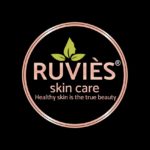
Debbi author of look great-live green,the pioneering natural beauty expert clearly states that our skin can be a mirror for what is going on inside our bodies and can also reflect what it’s exposed to in our environment. Read below her description of different skin types.
How to tell your skin type
Skin type isn’t a contract or a permanent marriage. It can change as we age or even over the course of a few months. Some women have dry skin for most of their lives, and then start to get a few oily patches here and there. Or some may relocate, and their new environments leave once-oily skin feeling parched. Being open to the fact that skin type can shift can help you adapt if changes occur. Sometimes skin can seem as unpredictable as life itself. Nevertheless, knowing your current skin type will help you buy products that will work best for you.

Normal skin
Normal skin is neither overly dry nor overly oily. Women with normal skin still deal with environ mental concerns (like sun protection and air pollution), the occasional breakout, or normal aging. Even “normal” skin has issues that need attention. However, I often see people with normal skin reaching for products that are not appropriate for their needs. If you have a few blemishes, you don’t need to switch to an entire acne-fighting regimen. You can simply spot treat the blemishes until they disappear. I always encourage women to use products with active ingredients only if they need it; for example, when I see women in their twenties with beautiful, youthful skin applying a high-powered anti-wrinkle cream, I explain that they don’t need these ingredients just yet. It’s kind of like taking antibiotics when you’re not sick. Not only won’t the antibiotics work, but it’s also possible to build a resistance to them. Skin can work the same way, so if we’re using strong ingredients too soon, they may be less effective when we actually need them. With normal skin, the best strategy is to maintain healthy habits to preserve skin’s youthfulness by protecting it from damage, spot treating problem areas, and restoring luster as needed.

Dry skin
Dry skin can exhibit slight scaliness, flakes, tightness, or be ashy, red, or rough. Dryness can result when the skin is lacking fluids (dehydration) or oils (moisture). You need a balance of both fluid and oil to have properly hydrated skin. There are many factors that contribute to dry skin—from constant exposure to low humidity, air conditioning, and heating in office buildings and homes to chemicals in skin-care products. Given that we’re all exposed to some of these drying elements, there are steps everyone can take to help protect the skin from these agents, such as washing your face with lukewarm water (as opposed to hot), eating foods with omega-3 fatty acids (like flaxseed and nuts), and limiting dehydrating foods (like caffeine and alcohol). Some skin-care products that aim to treat dry skin are filled with dehydrating chemicals or lack necessary ingredients for transdermal penetration (a substance’s ability to get into your skin). This means that even though some women are regularly applying moisturizer in the morning and evening, they still experience dryness because the product they are using simply sits on top of the skin or is packed with moisture-robbing chemicals. If you battle with dry skin, switching to products with ingredients that will neither impart, nor rob, your skin of fluids and oils can provide you with relief from dry skin.

Oily skin
Oily skin is not necessarily oily all the time; it often makes its presence well known around midday with shiny patches on the nose, forehead, or chin. People with oily skin might experience frequent breakouts due to an excess of sebum (an oily secretion produced by the sebaceous glands) that mixes with dead skin cells and causes a plug in the pores. Bacteria that can live on your skin thrive in the excess oil in your pores. Keeping congested pores clean is a top priority to help the skin function properly and reduce oil production. We’ve all heard cosmetic companies touting the importance of using oil-free products, but I’ll let you in on a little secret: oil on oil actually stops the skin’s overproduction of oil. However, when it comes to your skin, not all oils are created equal. You want to use oils that are noncomedogenic (meaning they don’t clog pores) and will help your skin balance and maintain normal oil flow. Jojoba oil (which is actually a wax that closely resembles your skin’s sebum) is a perfect example—it can be used to help rebalance the skin, assist with oil regulation, and keep the pores clear. I recommend steering clear of oil-free products, which seem like the perfect fix for an oily complexion, but they can instead dry out your skin and lead to increased oil production. This might sound a bit crazy, but putting the right oil on your oily skin will actually reduce the overall oil and balance out your skin, and oily skin still needs moisture. So instead, look for products that rebalance oil production and keep pores clean. Here’s a bit of good news: oily skin tends to age more slowly than dry skin.

Combination
Combination skin can be dry on the cheeks and oilier in the “T” zone (the forehead, nose, and chin), presenting challenges that are common in both skin types. Women with combination skin are often unsure how to care for their complexion, as it can be unclear which products will best suit them. There are several approaches for combination skin. You can use a serum (a skin-care product targeted to a specific issue) only on the area where the skin is having an issue. You don’t need to treat all your skin with the same active ingredients. Or you can work on cleaning and unclogging your pores. Oftentimes, women will develop combination skin with weather changes, or through hormonal changes. By deep cleaning your pores, balancing your pH, and proper oil and hydration balance, some women find this the effective solution to restoring a unified skin type. Other women will always have a bit of excessive dryness in one area or excessive oil in the T-zone; for them, the deep cleaning will help along with spot treating the problem area with different products. A facial oil, such as jojoba oil, can moisturize dry areas while bringing balance to oily zones. This makes it the perfect choice for both oily and dry skin. Choose an oil that also has skin-loving ingredients, like carrot oil (which is high in vitamin A) and rose hip oil (which is high in vitamin C). Additionally, using a pH-balancing toner, like the Tea and Vinegar Detox Toner, can keep dead skin cells turning over and prevent clogged pores.




